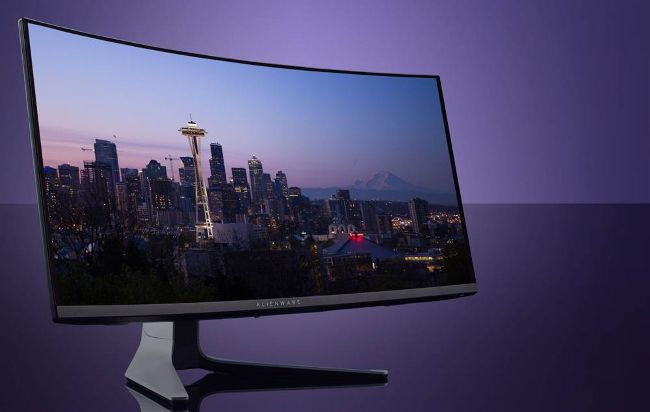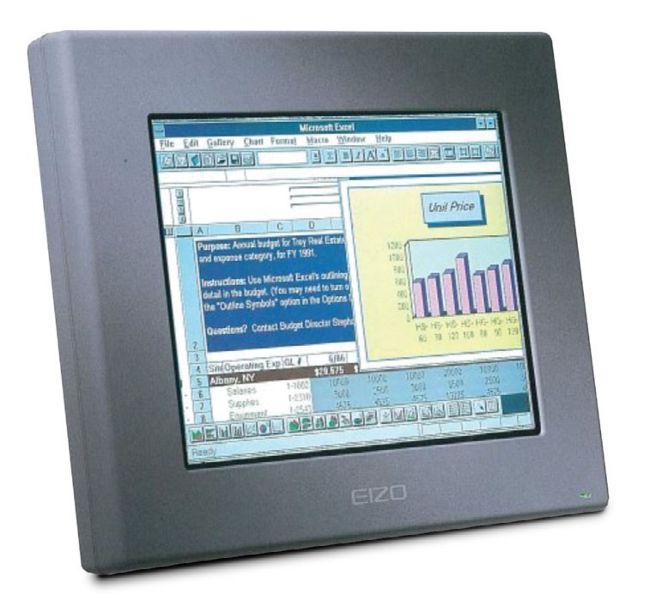screen tech
SCREEN TECH IN 2022
OLED monitors are here at last. But as Jeremy Laird reveals, you can expect plenty more panel tech in 2022

Dell’s new Alienware 34
AW3423DW OLED panel is the best gaming monitor yet.
NAILING DOWN the exact launch date of the very first color LCD monitor for the PC isn’t easy. But one of the earliest was certainly the NANAO F-1020 from Eizo. Launched way back in 1993, the F-1020 spanned a mighty 10.4 inches and rocked no fewer than 640x480 pixels. Count ‘em!
As it happens, by Eizo’s own estimations, it was a sales flop. Yet here we are nearly 30 years later drowning in LCD panels. The technology absolutely owns the PC monitor market. But is everything about to change? The arrival of the awesome new Alienware OLED gaming panel (see page 78) certainly suggests so.
At last, per-pixel lighting is actually a thing for the PC and not just smartphones and TVs. Plus far faster response, not to mention much better pixel response, and... we’re getting ahead of ourselves. The reality is that OLED isn’t going to assimilate the monitor market overnight. What’s more, LCD technology still has plenty more to give.
So, yes, the story of the PC monitor in 2022 is likely to be one of a technological turning point, the beginning of the end for LCD panels. But even if that is the overarching narrative, there are plenty of other subplots to enjoy, including 8K awesomeness, ridiculous refresh rates, and a whole lot more besides.
LET’S MAKE ONE THING perfectly clear.
LCD is a terrible technology for a fullcolor display. Truly, it could hardly be less suitable. The basics involve shining light through a small aperture containing liquid crystals, the latter changing orientation in response to an electrical current.
That enables light to either pass through or be blocked. Put three of these tiny, independently controlled “subpixel” windows together—one red, one green, and one blue respectively—and you have a system that, in theory, can render any color. The critical phrase here is “in theory”. Because in practice, LCD has several fundamental issues.
For starters, the fact that liquid crystals have to move at all immediately introduces latency. It takes time for the position or state of the crystals to move in response to a change in current. That process may be quick, but it is never going to be instant. Similarly, while the amount of light passing through each subpixel is limited according to the crystals’ orientation, it is never fully blocked. Some light always leaks through.
Making matters worse, the amount of visible light that escapes varies depending on your vantage point. Typically, maximum light blockage takes place perfectly perpendicular to the panel surface. But from any given viewing point, that will apply to only a small portion of the display.
As you look around the display, you are viewing each point of the panel from a slightly different angle. So you get both apparent variances across the display from a fixed position, and changes in brightness and color if you move position.
To cut a long story short, LCD monitors have fundamental issues with response, contrast, color control, and viewing angles, which is pretty damning of the technology. In that context, what’s most remarkable is just how good LCD tech has become since that seemingly inauspicious NANAO F-1020 monitor.
Today, pixel response is measured in fractions of a millisecond, the viewing angles of the best IPS monitors are good enough to be a non-issue in many scenarios, color fidelity is measured in billions of hues, and the introduction of full-array backlighting is finally solving the contrast conundrum.

Back in 1993, the Eizo F-1020 was one of the first flat panel monitors for the PC.
Indeed, it is actually possible to almost entirely fix that final issue of light control and contrast. The trick is to put two LCD panels together in a sandwich, both of the same headline resolution. You can then use the rear panel to act as a perpixel dimming array, allowing most of the light to be blocked before it reaches the primary panel and, in turn, dramatically improving black levels, contrast, and HDR performance. The catch? That’s an incredibly complex setup that introduces a whole new layer of display modulation.